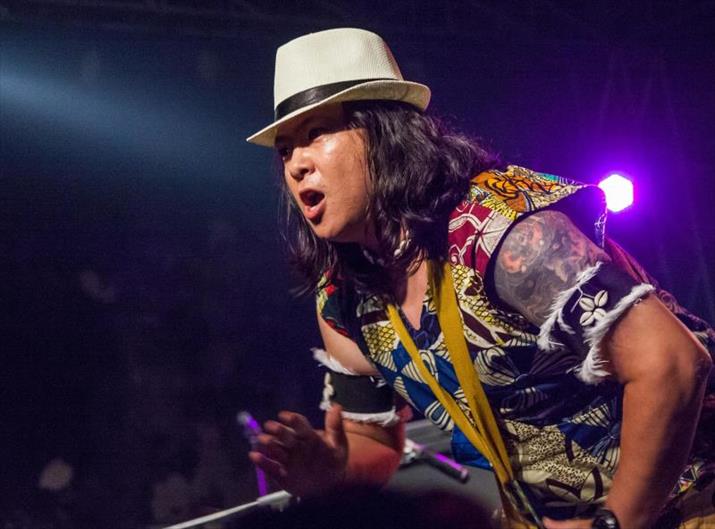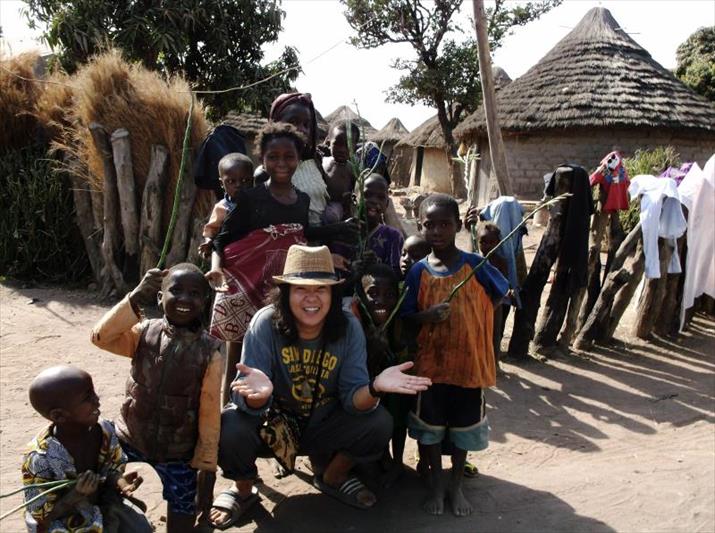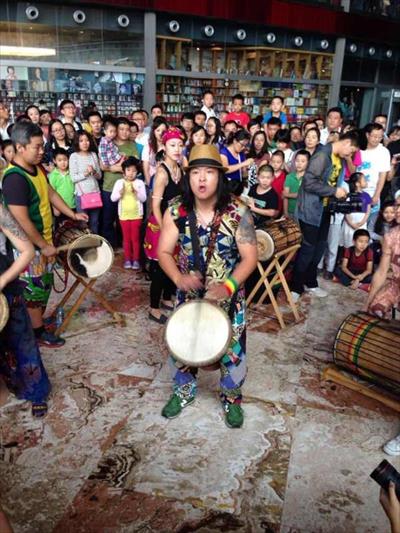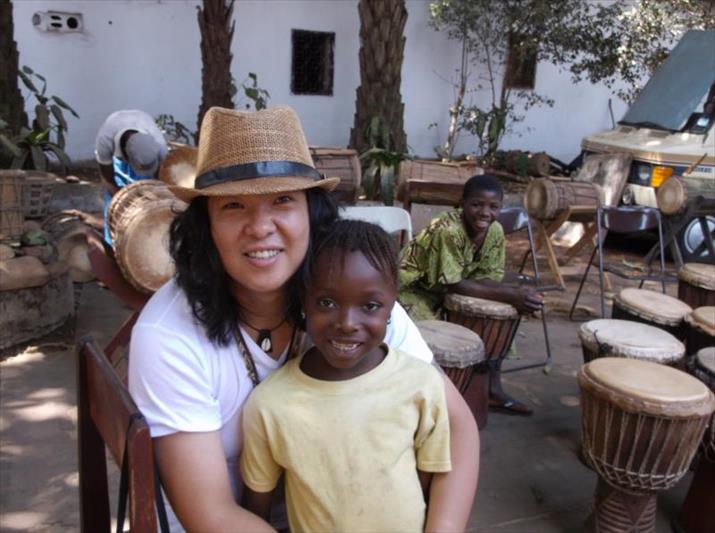|
||||||||||
| Home Nation World Business Opinion Lifestyle ChinAfrica Multimedia Columnists Documents Special Reports |
|
||||||||||
| Home Nation World Business Opinion Lifestyle ChinAfrica Multimedia Columnists Documents Special Reports |
| Lifestyle |
| Keeping the Beat |
| Chinese drummer spreads African rhythm at home By Rachel Richez |
| ·2017-01-03 |

The young man was intrigued by the tiny drum and after listening to the rhythms it could produce, decided to learn how to play it. However, he could not find a teacher in Beijing. So Zhao started to learn by himself. After five years of practice, he felt he couldn't improve on his own anymore and decided to meet the musician he admired most, Mamady Keïta, the renowned master drummer from Guinea.
Determined and passionate, he traveled to the United States in 2011 to participate in the annual workshop organized by the Guinean djembefola ("djembe player" in Malinke).
A new life
From then on, Zhao's life was never the same. "After the first time I studied with Keïta, something changed. I realized that if I played well, maybe I could change my life. So I quit my job and opened a studio to teach the djembe."

This life-changing decision surprised his family and friends, who considered the djembe to be only a hobby. In spite of his parents' disapproval, Zhao went ahead with his decision and today, the former journalist is more satisfied than ever with his decision. "After school, my dream was to travel around the world, and see different oceans, different cities. Sometimes I had money but no time, sometimes I had time, but no money. Teaching the djembe I cannot make a lot of money, but I travel around the world. So my dream came true."
Every year, Zhao attends Keïta's workshops, organized all over the world. By pursuing his passion for the djembe, he has visited the United States, Japan, Mexico and Guinea. His admiration for the African drummer is clear: "He is like my father," Zhao told ChinAfrica, praising the wisdom of the 66-year-old djembefola.
Introducing Africa
Learning the djembe means a lot more than just practicing an instrument. It means delving into the ancient Malinke culture. "If you play the djembe, you need to know about the culture because culture is very important. I always tell my students why we play the djembe: because we want to connect with different cultures, different people, and different countries," explained Zhao, now 35.

The instrument has been a tool of cultural exchange for a long time. After Guinea's independence from France in 1958, the first president of the country, Ahmed Sékou Touré, was determined to promote Guinean culture around the world. To this purpose, he funded various dance companies, aiming to spread traditional Guinean dance and music.
In addition to their cultural goal, these troupes allowed Touré to bring together the customs and rites of different ethnic groups of the country, reinforcing the cultural identity of Guineans. The impact of this cultural focus is still visible in the country, as confirmed by Zhao. "Guinea has the best music in this world. Everyone is a musician, the women sing and dance, the men play the guitar and the djembe."
China hails the djembe
Born in 1950, Mamady Keïta is part of the generation of artists trained under President Touré's initiative. He was seven when he started playing the djembe in Balandugu, his native village in northeast Guinea. At 12, he was recruited to the first regional ballet company in Siguiri, a city in northeast Guinea, and two years later, was selected to the Djoliba National Ballet, following a very intense, and sometimes brutal, training for nine months.
With the ballet company, he traveled extensively, promoting Guinean culture. Keïta remembers clearly his first trip to China in 1965. "What impressed me was the welcome I received from the Chinese people. In every city we arrived, we always had a warm welcome, people treated us with respect and they were very friendly. We knew that they were very proud of their culture because they were very eager and proud to share it with us, and they were always very happy."
After a very successful international career, the Guinean master founded the first Tam Tam Mandingue percussion school in Belgium in 1991. Today, 16 certified teachers such as Zhao run the schools in nine different countries.

According to Zhao, there is a growing interest in the djembe in China. "Every city has a studio, classes, and teachers," he said. Traditional African percussion attracts a wide variety of people. Zhao's youngest student is eight, and the oldest 65.
For Keïta, this interest can be explained by the similarities between Chinese and African rhythms: "In traditional Chinese music [too], you have percussion instruments. I think when they [Chinese] discover the djembe they love it because the djembe is always played with joy."
But Chinese and Africans share a lot more than the djembe. "Tradition, respect and food," the Guinean musician explained. There is a strong human connection, reinforced by the continuous China-Africa cooperation at the government level. "Since the independence of Guinea, we have always had a very good relationship with China," Keïta concluded. "Good diplomacy and good business between the two countries."
| About Us | Contact Us | Advertise with Us | Subscribe |
| Copyright Beijing Review All rights reserved 京ICP备08005356号-5 京公网安备110102005860号 |